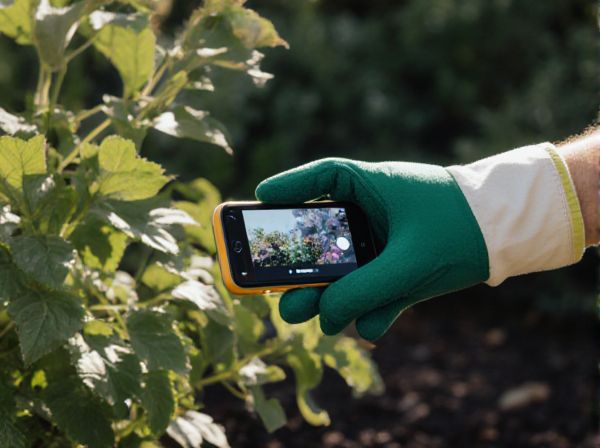
Cool Shade vs Warm Shade Illustration
Cool shade features bluish or greenish hues that create a calming, refreshing atmosphere ideal for relaxation and focus. Warm shade incorporates reddish or yellowish tones, producing a cozy, inviting feeling that enhances comfort and intimacy. Choosing between cool and warm shade depends on the desired mood and the environment's lighting conditions.
Table of Comparison
| Feature | Cool Shade | Warm Shade |
|---|---|---|
| Color Temperature | 5000K - 6500K (blueish tones) | 2700K - 3500K (yellowish tones) |
| Visual Impact | Creates calm, refreshing, and modern atmosphere | Creates cozy, inviting, and comfortable atmosphere |
| Best Applications | Offices, hospitals, retail spaces | Homes, restaurants, lounges |
| Effect on Mood | Improves focus and alertness | Promotes relaxation and warmth |
| Energy Efficiency | Often uses LED or daylight bulbs | Often uses incandescent or warm LED bulbs |
| Cost | Typically moderate | Varies, often slightly higher for warm lighting |
Understanding Cool Shade and Warm Shade in Gardening
Cool shade in gardening refers to areas receiving indirect light filtered through dense foliage, typically from trees with larger leaves, which maintain lower temperatures and higher humidity beneficial for shade-loving plants like ferns and hostas. Warm shade occurs in spots with dappled sunlight, often under trees with smaller or sparse leaves, allowing more diffused sunlight and slightly elevated temperatures suitable for plants such as impatiens and begonias. Understanding the differences between cool and warm shade helps gardeners select appropriate plants and optimize growth conditions based on light intensity and microclimate variations.
Key Differences Between Cool Shade and Warm Shade
Cool shade features bluish-green foliage that thrives in lower light and cooler temperatures, providing a refreshing and calming garden atmosphere. Warm shade displays yellowish-green or reddish foliage, thriving in warmer environments and adding vibrancy with its bright hues. Key differences include the temperature tolerance, leaf color, and the overall mood they impart to shaded areas.
Light Conditions: Cool Shade vs Warm Shade
Cool shade occurs in areas shaded by surfaces reflecting blue or green light, such as grass or water, resulting in cooler, bluish light conditions that reduce eye strain. Warm shade arises under trees or buildings reflecting red or yellow hues, creating warmer, golden-tinted light that enhances comfort and visual warmth. Understanding these light conditions helps optimize outdoor space design for both aesthetic appeal and thermal comfort.
Best Plants for Cool Shade Gardens
Cool shade gardens thrive with plants like hostas, ferns, and astilbes, which flourish in lower light and cooler soil temperatures. These plants excel in environments with filtered light, such as under dense tree canopies, providing lush foliage and vibrant blooms. Incorporating coral bells, lungwort, and bleeding hearts enhances texture and color in cool shade garden beds, promoting biodiversity and year-round interest.
Top Choices for Warm Shade Loving Plants
Warm shade plants thrive best in filtered light conditions that simulate a gentle warmth, making them ideal for spots with dappled sunlight or indirect exposure. Top choices for warm shade-loving plants include Caladium, whose vibrant foliage brightens shaded areas, and Hellebores, which bloom beautifully in mild, sheltered environments. Ferns like the Autumn Fern and tropical plants such as the Cast Iron Plant also excel in these conditions, providing lush greenery and texture in warm, shaded gardens.
Soil and Moisture Requirements in Different Shade Types
Cool shade typically occurs under coniferous trees or dense canopies, resulting in soil that retains higher moisture levels and remains cooler, favoring plants that require consistently moist, well-drained soil. Warm shade, often found beneath deciduous trees with dappled sunlight, features soil that warms more quickly and dries out faster, necessitating plants adapted to moderate moisture and improved drainage. Understanding the distinct soil moisture profiles in cool versus warm shade helps optimize plant selection and irrigation strategies for healthier growth.
Designing Your Garden: Mixing Cool and Warm Shade
Designing your garden with a mix of cool and warm shade enhances plant diversity and visual appeal by balancing temperature and light conditions. Cool shade areas, characterized by bluish-green foliage and softer shadows, support moisture-loving plants like ferns and hostas, while warm shade with golden, amber hues nurtures sun-tolerant species such as hydrangeas and begonias. Strategically integrating both shade types creates microclimates that optimize growth, extend blooming periods, and add dynamic contrasts in texture and color throughout the garden.
Troubleshooting Common Shade Problems
Cool shade often causes leaf discoloration and slowed growth due to insufficient light intensity, while warm shade tends to promote fungal diseases like powdery mildew because of higher humidity levels. Troubleshooting common shade problems involves adjusting the shade fabric density to balance light penetration and airflow, ensuring plants receive adequate indirect sunlight without heat stress. Monitoring soil moisture and optimizing ventilation under shade structures also helps prevent root rot and fungal infections associated with excessive shade.
Seasonal Changes: Managing Shade Temperature
Cool shade typically occurs in northern exposures or areas with ample airflow, resulting in lower temperatures and a refreshing environment during hot seasons. Warm shade, found on southern exposures or sheltered spots, retains more heat, offering a comfortable retreat in cooler months. Managing shade temperature effectively involves selecting plant species and structures that optimize airflow and sunlight exposure relative to seasonal changes.
Expert Tips for Thriving Shade Gardens
Cool shade, typically found under pine or cedar trees, offers dappled light and lower temperatures ideal for ferns, hostas, and astilbes thriving in moist, well-drained soils. Warm shade, often created by deciduous trees like maples or oaks, provides filtered sunlight with higher humidity levels suitable for impatiens, begonias, and caladiums that require rich, organic soil. Expert tips emphasize matching plant species to specific shade types while improving soil structure and maintaining consistent moisture to ensure vibrant growth in diverse shade garden environments.
Cool Shade vs Warm Shade Infographic

 gardendif.com
gardendif.com